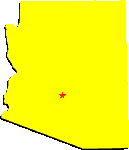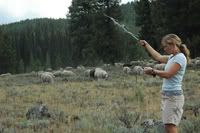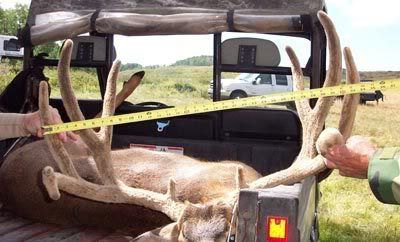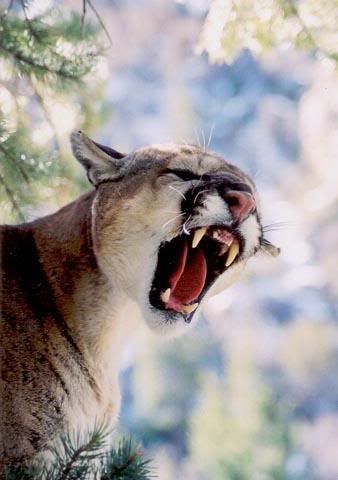CLICK: MULE DEER RECORDS
CLICK: SCORING A TYPICAL BUCK
CLICK: SCORING A NON TYPICAL BUCK
Minimum Scores:
Category Awards All Time
Typical 180 190
Non-typical 215 230
———————————
Boone and Crocket Specific Guidelines:
Trophies that have been tampered with to gain an advantage obviously are not eligible for entry into the records books. Examples of trophy tampering include the deliberate removal of abnormal points from typical racks to increase a trophy’s score and/or the addition of antler or horn material. If any points are deliberately removed from antlers of any trophy by breaking or sawing them off, that trophy is not eligible for entry in the Awards Programs and/or records books. Deliberate modification of horns by adding to horn length or artificially increasing circumference measurements is also grounds for disqualification of a trophy.
Prior to January 1, 1980, the Club did not accept any repaired trophies for the records books. After that date, however, the Records Committee agreed to accept repaired trophies for the records books on a case by case basis. Trophies that have been repaired can be accepted by the Records Committee if the owner or the Official Measurer identifies the repair, and if the repair is made with original horn or antler material. The Committee still reserves the right to reject any repaired trophy, at the Committee’s discretion.
When scoring any trophies that have been repaired, no portion of the repaired material can be included in any measurement nor can any allowance be made for lost material. For example, measurements of repaired points or main beams can only be taken to the point of the break.
When measuring horns, no allowances can be made for missing horn material. For example, there are frequently large chunks of horn material missing in the area where the D-2 circumferences are taken on desert sheep. This damage probably occurs when sheep are sparring with each other. If a D-2 circumference falls on the damaged area, the circumference is still taken through the damaged area by wrapping the tape snugly around the horn.
Cat and bear skulls are also prone to being damaged. Some damage occurs naturally when bears are sparring with each other. More frequently, however, skulls are damaged when trophies are shot in the head. In any event, measurement of damaged skulls must include only the intact, unrepaired portions of the skull.
Older deer racks often have a varnish coating. It seems that varnishing trophies must have been a common practice in the “good old days,” since it seems it is generally only older racks that surface with varnish on them. Because all velvet must be removed from antlers before they can be measured, people may assume all varnish must be removed from antlers before they can be officially measured. This is not so. Basically, the antlers can be scored, so long as the varnish doesn’t have any effect on the final score. However, if there are pockets or spots of thick varnish that affect any measurements, the varnish must be removed before the trophy can be officially measured.
Official measurements cannot be taken until the antlers, horns, skulls or tusks have air dried at normal room temperature for least 60 days after the animal was killed. If the trophy has been frozen prior to cleaning, as is often the case with skulls, the 60-day drying period begins once the cleaning process is complete. The drying process for trophies that have been boiled or freeze-dried starts the day they are removed from the boiling pot or freeze-drier, respectively.
In the case of picked up trophies, the 60-day drying period also applies. If it is clear from the condition of the antlers, horns, skulls or tusks that the trophy has dried for more than 60 days, one does not have to wait another 60 days from when it was found to measure it. However, it is necessary to enter the approximate date the animal died on the line provided for the date of kill on the score chart. Trophy owners may be asked to provide a brief history for “picked up” trophies or trophies of unknown origin to substantiate the approximate date of death.
As keeper of the Records of North American Big Game, the Club has the inherent responsibility to maintain the integrity of the records. On occasion the validity of some entries is questioned. The Records Committee treats such questions as serious matters. If, upon completion of the Club’s investigation, it is found that the trophy was inappropriately entered, the matter is taken to the Records Committee. The typical action by the committee in such cases is to remove that trophy and all others that that particular trophy owner has entered into the records books and to preclude any future entries from that hunter or trophy owner, as the case may be.
Shrinkage of horns (pronghorns, goats, etc.) has been a concern of many trophy owners over the years. It is acceptable to remove horns from the skull, clean them, and then have them reset with a bonding substance as long as the horns are not altered in the process. Thus, a bonding substance can be used but its presence cannot enhance the horn’s basal circumference. Alteration of the basal circumference is grounds for disqualification of the trophy.
Every effort is made by the Club to ensure that the location of kill data for trophies listed in the records books and Fair Chase magazine are accurate and correct. Space is provided on both the score chart and the Hunter, Guide and Hunt Information form to include this data for each entry.
Please keep in mind that we are looking for the following information when completing the blanks provided for the location of kill information. For trophies taken in the lower 48 states, we need the county and state (e.g. Lawrence Co., PA) where the trophy was taken (or found). If the county is unknown, we need to know the state where it was taken. A standard road atlas is used to ensure the correct spelling of counties in the lower 48 states.
For trophies taken in Canada and Alaska, we need the name of the nearest geographic feature (e.g. Post River, AK; Glacier Lake, BC; Cataract Creek, AB) that can be found on a map or in a geographic atlas of place names for that state or province. The Club has a small library of geographic atlases and topographic maps used to ensure that the name of a geographic location is a nationally accepted name (not simply a local name) and that it is properly spelled.
At times we have problems collecting geographic information from Canadian and Alaskan hunters. For example, a whitetail buck taken in an agricultural area in the prairie provinces may be a hundred miles from the nearest geographic feature. However, while we shy away from using the names of towns, since most animals are not actually killed in a town—only near it, we will use towns if no other location of kill information is available.
If there is more than one geographic feature that could be listed for a trophy, we prefer to list the feature closest to the site of kill. For example, Divide Lake is a better location of kill for a mountain caribou than the Mackenzie Mountains that covers thousands of square miles. Similarly, it is not very useful to list a location of kill for a whitetail deer as Lake Winnipeg since it stretches for hundreds of miles through the heart of Manitoba. For trophies taken in Mexico we simply need to know the state it was taken in.
If the location of kill or find is not known, the location should be listed as “unknown.” Of course, an unknown location of kill is unacceptable for trophies separated from subspecies by boundaries. For example, an elk trophy from Washington State cannot be accepted in the Roosevelt’s elk category with an unknown location of kill since we must be able to verify that it came from an area where Roosevelt’s elk are located.
It is rare that we ask an individual to pinpoint the exact location of kill for his or her trophy on a map. However, we may need this information for categories of big game separated by boundaries. If we receive this information from a trophy owner, the information remains confidential and is never divulged to anyone for any reason.
When completing the location of kill information on the score chart and HGH form please be as accurate as possible. This will continue to add scientific validity to the records listings and ensure that the location is correctly spelled.
The Boone and Crockett Club, because it recognizes the trophy and not the hunter or owner, accepts hunter-taken trophies harvested with: firearms, including muzzle loaders, pistols, shotguns, etc.; archery tackle, including compound bows and traditional archery equipment; crossbows; etc. All hunter-taken trophies are eligible for entry into the Club’s Awards Programs and records books, so long as the equipment is legal in the state or province where the animal is harvested. (Pope and Young Club only accepts trophies taken with a bow.)
The Boone and Crockett Club, because it recognizes the trophy and not the hunter or owner, also accepts trophies that are picked up (e.g. winter kills, road kills, etc.) and trophies of unknown origin (e.g. garage sales, taxidermists, attics, etc.). Trophies accepted with unknown locations of harvest are eligible only if they are for a category without a boundary.
Shed antlers, as well as any set of antlers with a split skull plate, are not eligible for entry in the Club’s Awards Programs and/or records books, regardless of how well they have been restored to their original condition. This is because the inside spread, which is an integral part of the final score of antlered trophies, cannot be accurately determined if the skull plate is absent or split. If an official measurer suspects that a set of antlers he or she is measuring is either shed antlers or a split skull, he or she should contact the Club’s headquarters for instructions on x-raying that trophy. This policy applies to trophy specimens of deer, caribou, moose and elk, as well as pronghorn.
Trophies taken on tribal/communal lands in line with sound game management practices, taken in full compliance with tribal/communal laws or regulations regarding such hunting, and with possession of the usual state/provincial hunting license where applicable, and taken in full compliance with the Boone and Crockett Club’s rules of Fair Chase, will be fully accepted as entries for both awards and publication in the records books.
The Boone and Crockett Club does not accept antlers in “velvet” for entry into the Awards Programs and/or records books unless the velvet is removed before official measurements are made. Remnants of velvet are permissible as long as they do not affect any measurements.



 Wood River Valley resident Cindi Hillemeyer scans the surrounding Smoky Mountains with a handheld radio telemetry receiver in attempt to locate the Phantom Hill wolf pack’s two radio collared wolves Monday evening. This summer, Hillemeyer has been working as a volunteer with the Idaho Department of Fish and Game tracking the movements of the pack in an attempt to keep them away from bands of sheep that are grazing federal grazing allotments. Photo by Jason Kauffman
Wood River Valley resident Cindi Hillemeyer scans the surrounding Smoky Mountains with a handheld radio telemetry receiver in attempt to locate the Phantom Hill wolf pack’s two radio collared wolves Monday evening. This summer, Hillemeyer has been working as a volunteer with the Idaho Department of Fish and Game tracking the movements of the pack in an attempt to keep them away from bands of sheep that are grazing federal grazing allotments. Photo by Jason Kauffman 


